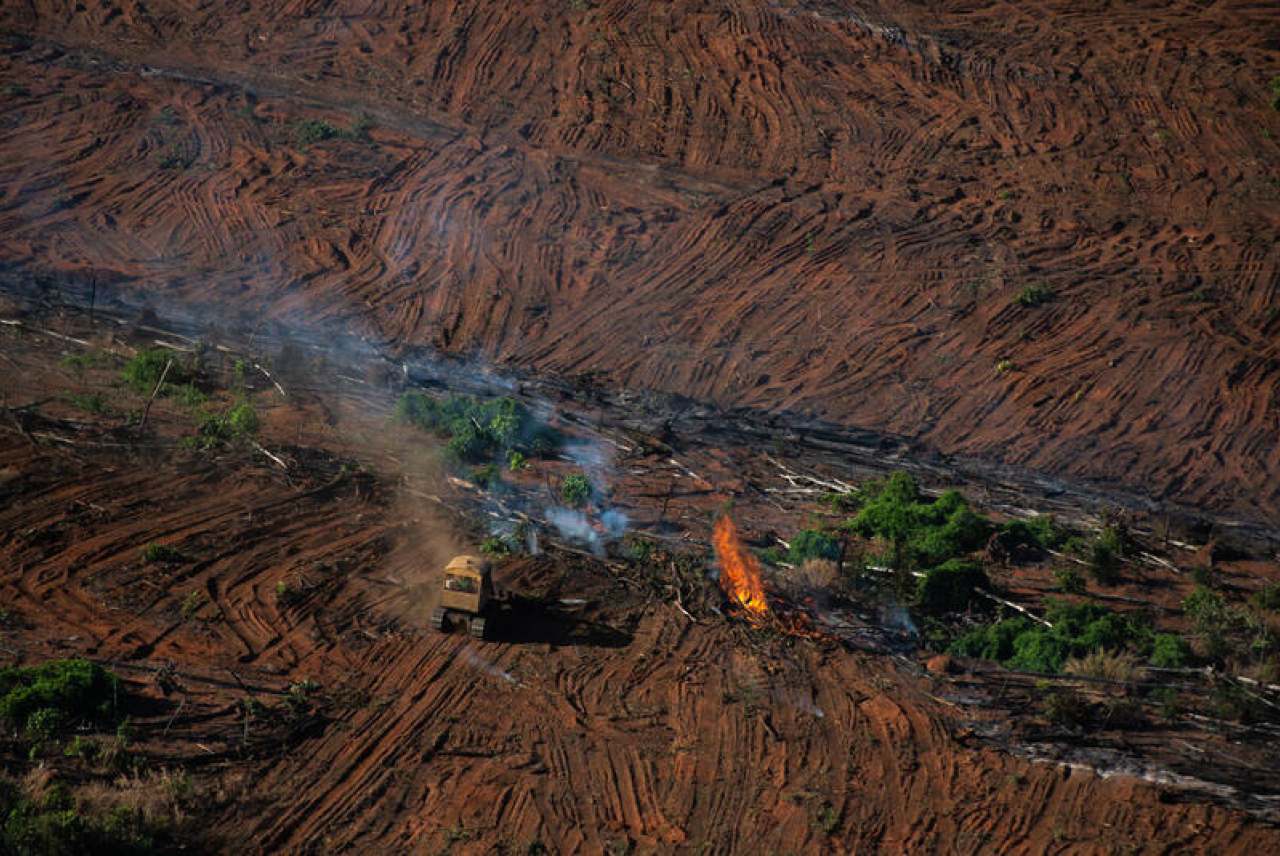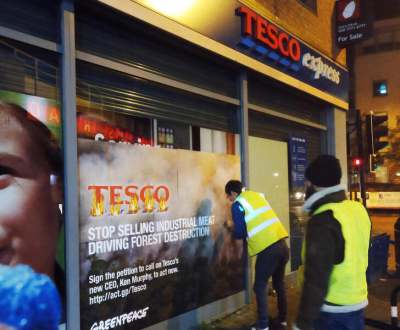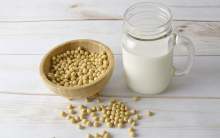Vast areas of the Brazilian Amazon, Cerrado and Pantanal are slashed and burned every year to make way for cattle ranches, or to grow soya for animal feed that’s fed to industrially produced British chickens and pigs.
As the UK's biggest supermarket, Tesco sells more industrially produced meat than any other. Not only does it buy meat from companies owned by forest destroyers including Moy Park and Pilgrim's Pride (previously called Tulip), but the soya in its meat and dairy supply chain eclipses its competitors. It’s making big profits from products linked to forest destruction.
With such huge buying power, Tesco could be a leader in stripping deforestation from supply chains. Instead, it seems to be putting more effort into greenwashing.
Tesco ran social media adverts and has amended its website claiming that it supports Greenpeace’s call to stop deforestation. It also claims that by the end of 2021 it will have hit its ‘target of zero deforestation for soy animal feed through certification’.
It may look like Tesco cares but, since signing up a decade ago to cut deforestation from its supply chain by 2020, we've seen very little action. Here are five ways you can challenge Tesco to tell the truth about deforestation:
1. Ask Tesco if it’s still buying meat from forest destroyers
Tesco makes great play of the fact that it no longer buys Brazilian beef, but what it doesn’t address is the fact it is still buying chicken and pork from Brazilian-owned companies Moy Park and Pilgrim’s Pride. These are UK subsidiaries of the Brazilian meat giant JBS, a company notorious for its role in forest destruction. JBS recently announced it would continue trading with Brazilian farms that had cleared forest to produce meat until 2035.
2. Ask Tesco if the pork and chicken it sells is fed on soya from deforested land
We know it is, because an investigation by Greenpeace Unearthed, The Bureau of Investigative Journalism, The Guardian and ITV News, traced soya from deforested land in the Brazilian Cerrado - the world’s most wildlife-rich savannah - directly to chicken on Tesco’s shelves.
Tesco uses half a million tonnes of soya every year: that’s around one sixth of the UK’s total soya imports. It told us 99% of that soya is used to feed the meat and dairy it sells and it has no idea exactly where that soya comes from. To get around this, Tesco is attempting to use ‘certified soya’. But, this will never result in a reduction of deforestation to the extent and speed needed to stop wildlife loss, end the genocide against Indigenous peoples and tackle climate breakdown.
3. Ask Tesco how soya certification really works
In 2010, Tesco committed to ‘zero net deforestation through certification by 2020’ and claims to have met this target. But what does it actually mean?
Certification can mean a variety of things, from complete segregation and traceability of sustainably grown soya (the best option) down to companies buying credits to ‘offset’ their soya use (the worst). Credit schemes claim to provide funding to farmers growing soya sustainably, but the actual soya in companies’ supply chains can still come from anywhere - including illegally deforested land. Currently nearly all of Tesco’s soya is bought under some kind of credit scheme, with only small amounts segregated and properly accounted for.
A recent Greenpeace report Destruction Certified concluded that, often, all certification schemes do is provide cover for destructive businesses to continue business as usual.






